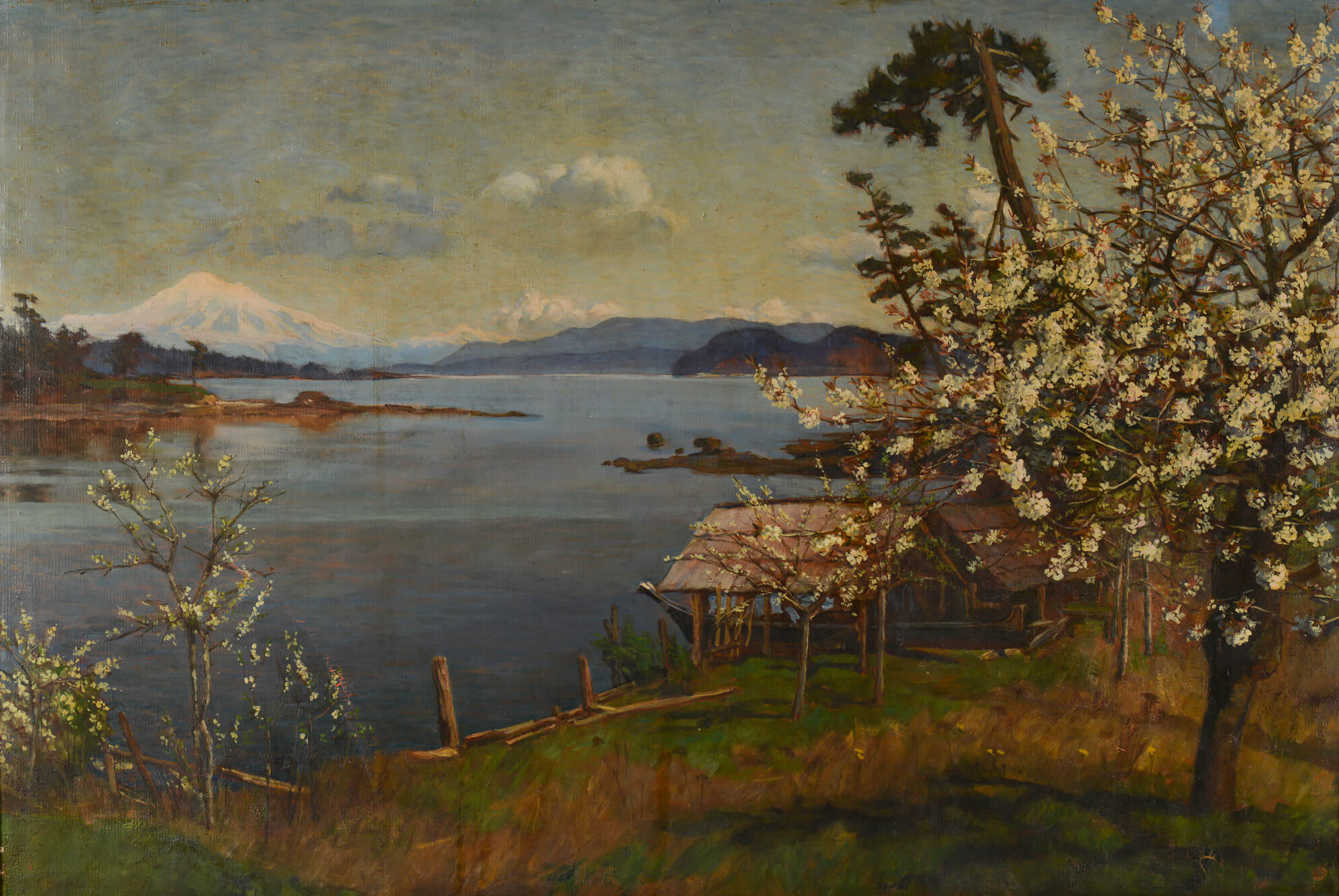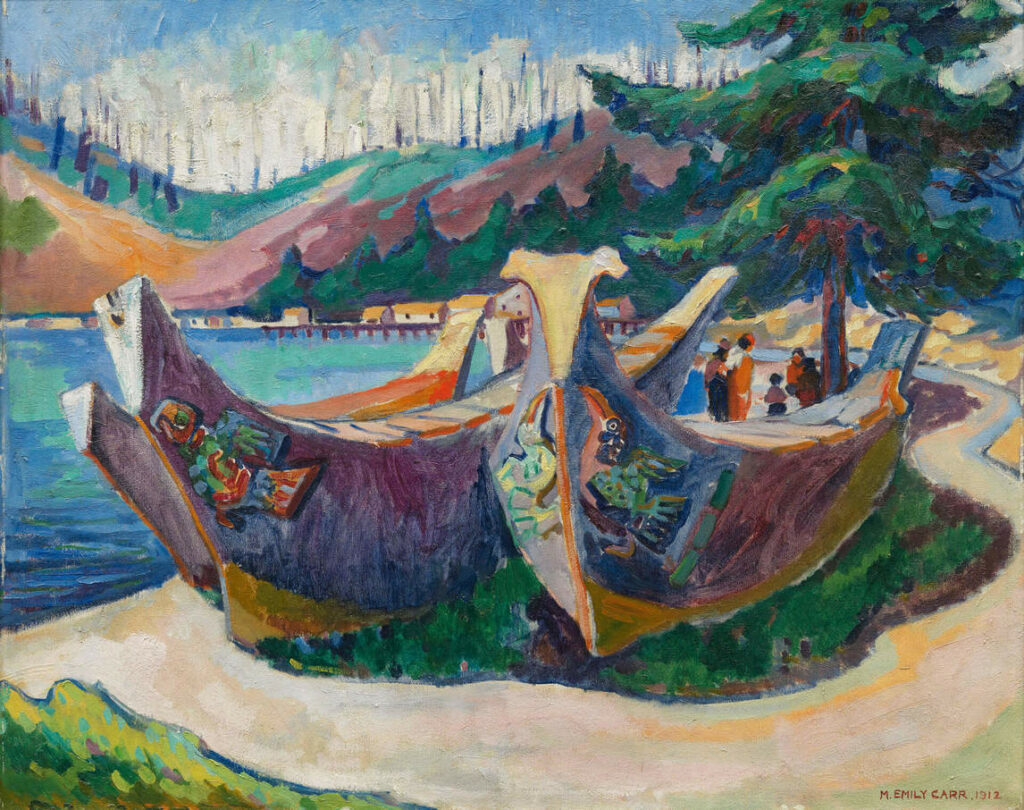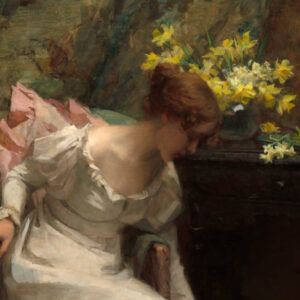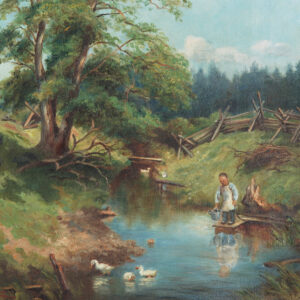Mosquito Island 1907

Sophie Pemberton, Mosquito Island, 1907
Oil on canvas, 82.6 x 122.2 cm
Private collection
In this careful composition painted on Knapp (Mosquito) Island, just off the Saanich Peninsula, Pemberton introduced many elements to engage the viewer. Around her are blossoming trees in an old orchard, fence posts, suggestions of a tidal beach, and a boat shed sheltering an Indigenous canoe, which provides a sense of scale. A layered series of small rocky islets and larger treed islands draw the eye outward across the ocean toward the majestic snow-capped Mount Baker and Cascade Mountains in the distance, offset from centre. The late morning sun sensed overhead between parting clouds casts a warm pinkish hue and, by illuminating the water, creates a route through the islands toward the peak.
Pemberton painted Mosquito Island in just eight days in April 1907 while visiting family friends on the adjacent Piers Island. Clive Phillipps-Wolley, a noted writer and poet, was among Pemberton’s loyal supporters, and his wife and daughters knew Sophie and her sisters well. At this time, Pemberton had been married to Canon Arthur Beanlands for eighteen months, but she had not relinquished her determination to be a professional artist. Not only did she continue to paint, but she left the rectory for two weeks to create a painting that she intended to sell.

Six days after she completed Mosquito Island on April 23, 1907, Pemberton exhibited it in downtown Victoria in a storefront window. Some viewers were disgruntled that it differed in its Impressionist touches from the finely detailed and polished portraits to which they were accustomed. As one wrote:
Several passers-by looking at the picture expressed disappointment, but when I suggested that they step back and view it from a distance of twelve or fifteen feet they found their objections disappear. It is a fine painting; colour and drawing are good… and is especially valuable as [a] typical representation of Pacific scenery.
The painting sold within a week. The Victoria Times reported: “The picture has been acquired by an English gentleman and will be exhibited in various centres of the home land.” Pemberton negotiated with the buyer that she could include it in the major solo exhibition of paintings celebrating the diverse scenery in southern Vancouver Island she was planning for 1909 in the Doré Gallery in London. This painting, along with others sold there, remained in the United Kingdom.
Modernist art was not always understood by British Columbia’s more traditional art-goers. A few years later, Victorian residents questioned the 1912 Fauvist-style paintings of the West Coast created by Pemberton’s contemporary Emily Carr (1871–1945), who also studied in France. With War Canoes, Alert Bay, 1912, Carr reworked her original outdoor watercolour sketch of 1908 in a bold palette.

 About the Author
About the Author
 More Online Art Books
More Online Art Books
 Acknowledgements
Acknowledgements